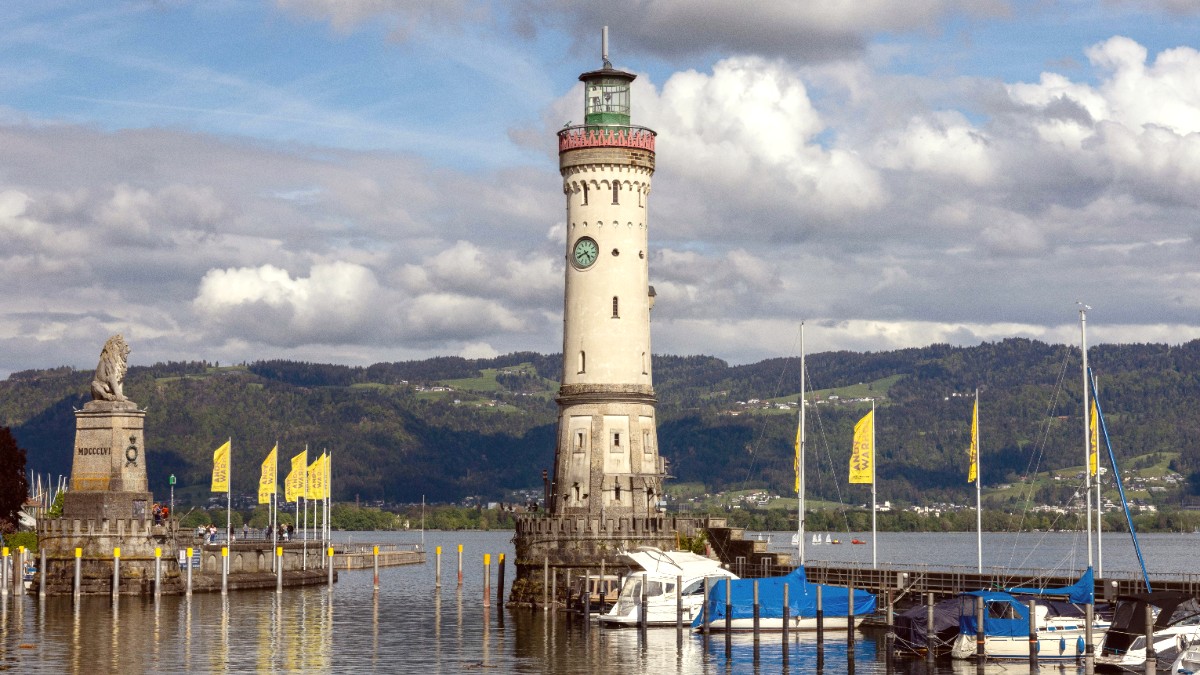
Germany
Comprehensive Overview: Buses connect towns and villages, serving as a main mode of transport within towns and for inter-town travel. Regional trains connect major towns on the German side (Konstanz, Radolfzell, Singen, Friedrichshafen, Lindau) and extend into Switzerland and Austria. Ferries cross the lake to towns and islands like Mainau and Reichenau, including car ferries (Konstanz-Meersburg, Friedrichshafen-Romanshorn) and passenger-only services (Weiße Flotte). No metro or tram systems in the German Lake Constance towns.
Route Maps and Hubs: Important hubs include Konstanz (major train station, ferry terminal, bus hub), Friedrichshafen (train station, airport, ferry terminal), Lindau (train station, island, ferry terminal), and Radolfzell (train station). Route maps are at tourist information centers, stations, bus stops, and online via local transport associations (VHB, Bodo).
Public transport operates early morning (5-6 AM) until late evening (10-11 PM). Frequency varies by route, time of day, and season. Check schedules for smaller routes and off-peak times.
Newer buses and trains are generally accessible with ramps or low-floor entry. Ferry services provide ramps and accessible areas. Historic buildings and older attractions may have limited accessibility.
Use DB Navigator for train schedules. Consider Bodensee Card PLUS. Use Google Maps for directions. Plan routes in advance for seamless travel.
Purchase single tickets from bus drivers (for buses), vending machines at train stations, or via official online apps.
Day Tickets (Tageskarte) offer good value. Group Tickets (e.g., Baden-Württemberg Ticket) cater to small groups, offering unlimited travel for up to 5 people for a day.
The Bodensee Card PLUS provides free travel on regional buses and trains (including Swiss/Austrian parts) and all scheduled boat services. Also, free entry to 160+ attractions.
The Konstanz Guest Card (Konstanz Mobil) offers free city bus use in Konstanz and discounts on some attractions for guests staying there.
Taxis and ride-sharing services provide on-demand transportation options, specifically when public transport is less frequent or for direct transfers.
Drive on the right side. Seatbelts mandatory. Speed limits enforced. Mobile phone use prohibited without hands-free system. Alcohol limit is strict (0.05% BAC).
Roads are in excellent condition throughout the region. In winter, snow tires (M+S or snowflake symbol) are legally required in snowy or icy conditions.
Paid parking is common in town centers, often in multi-story parking garages (Parkhaus) or street parking with meters. Look for "Parkhaus" signs. Illegally parked cars can be ticketed or towed.
Walking and cycling are popular and enjoyable ways to experience the scenic beauty of Lake Constance and its charming towns.
Generally, no specific "no-go" areas exist for pedestrians and cyclists.
However, some areas might experience heavy car traffic during peak times, making cycling less pleasant on main roads.
Self-guided tours allow you to explore at your own pace using maps and guidebooks.
Many tourist offices provide free city maps to aid your independent adventures.
Always follow traffic rules and signage for your safety.
Exercise caution on shared roads where cyclists and vehicles coexist.
Lake Constance presents a variety of transport options, catering to all travel styles. From scenic ferry rides to extensive cycle paths and efficient public transport, getting around is part of the experience.
Embrace the diverse transportation network to explore the charm and beauty of the tri-country region seamlessly.